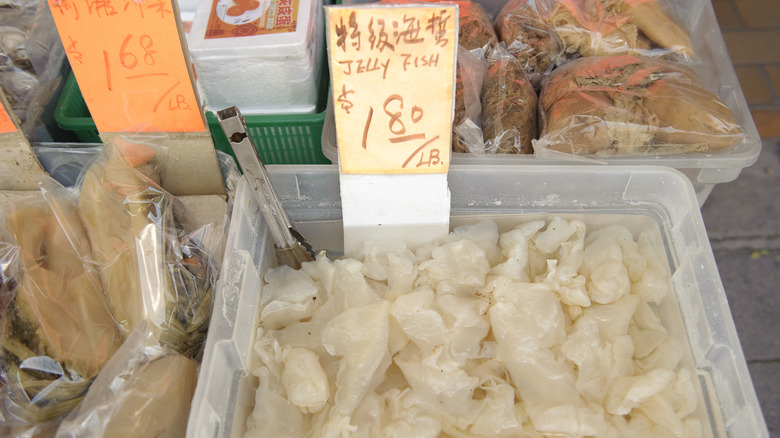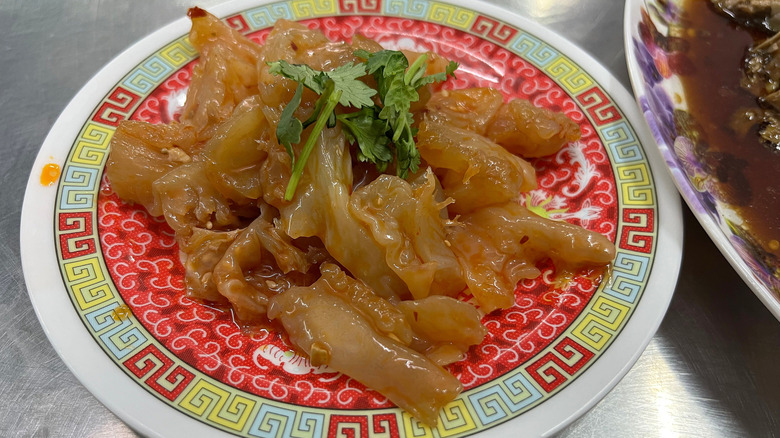Are Store-Bought Jellyfish Safe To Eat Raw?
Though it might not be the first thing on your grocery list, jellyfish is indeed an ingredient you can sometimes find while shopping at Asian grocery stores. They're generally safe to eat raw, as long as they're specially prepared and labeled for consumption, but there are some precautions to take.
Not all jellyfish are safe or suitable for snacking, but at least 11 species have been identified as edible, including the moon and cannonball jellyfish. These edible varieties are selected for their texture, mild flavor, and, of course, lack of venom. Creating food-safe jellyfish is all about the processing: The sticky seafood is treated with salt and alum (a food preservative) to remove water and neutralize their stinging cells. This is why you'll only want to purchase jellyfish from trusted suppliers to enjoy this unique delicacy.
It probably goes without saying, but always check the label to make sure it's actually intended for human consumption; some stores do sell jellyfish for strictly ornamental uses. Your source really matters here — only purchase the goods from reputable markets that specialize in Asian or seafood delicacies. Color is another important factor: Freshly processed jellyfish are creamy white, turning yellow as they age. If it's brown, it has definitely spoiled.
Ways to eat jellyfish
One of the most popular dishes to make with this jiggly marine animal is jellyfish salad, a light and refreshing dish that's culturally significant in many Asian countries. In China, it's often served as a cold appetizer at banquets and holiday meals for its' symbolic representation of prosperity and celebration. You'll often see it as the first course at a wedding, birthday, or Lunar New Year celebration. In Japan, the word for jellyfish is "kurage," and a similar salad pops up in izakayas (pubs) or as part of a bento box. A good jellyfish should be firm and slightly crunchy, not unlike a plate of al dente noodles. Though sometimes it's sold dried and will require rehydration, it can also be found pre-shredded and ready to go.
Similar to tofu, it's all about the marinade when it comes to making a good jellyfish salad, as their gelatinous bodies have a very mild, faintly oceanic flavor that easily takes on whatever dressing it's mixed with. A typical marinade for the salad is often the tangy, savory mixture of soy sauce, sesame oil, rice vinegar, sugar, and sometimes chili oil or garlic. Thinly sliced cucumbers, carrots, or daikon radishes are often mixed in to provide textural contrast. Though jellyfish used to be harder to find, lesser-known foods from throughout Asia are growing in popularity across the States (as seen with this TikTok user from Arkansas joyfully discovering kimchi), bringing this delicacy to a more mainstream U.S. audience. (Jellyfish chips, too, may soon be on the way.)

